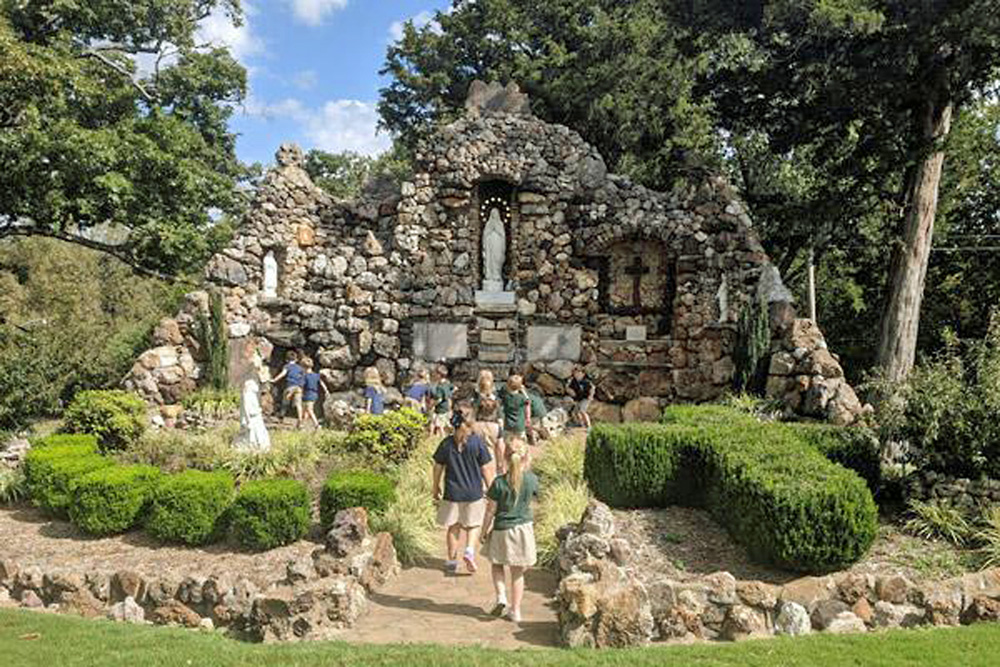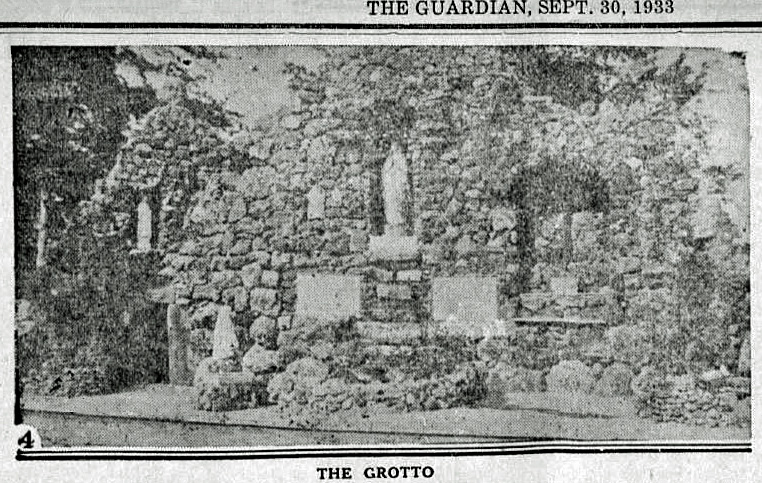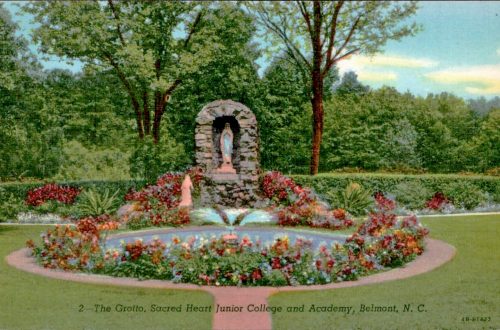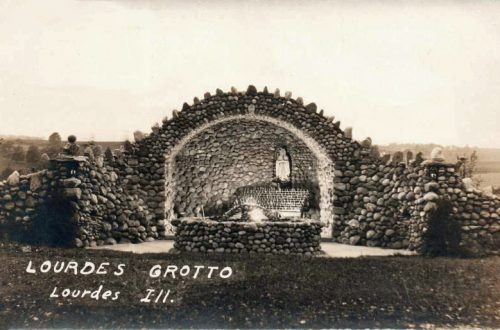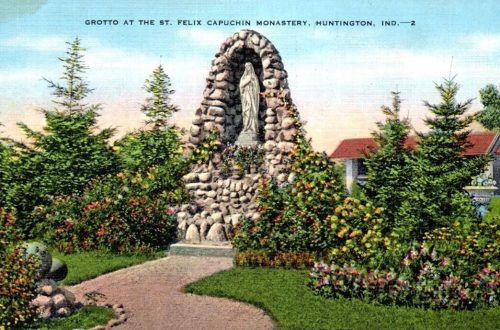Pocahontas, AL: St. Paul’s Church Grotto
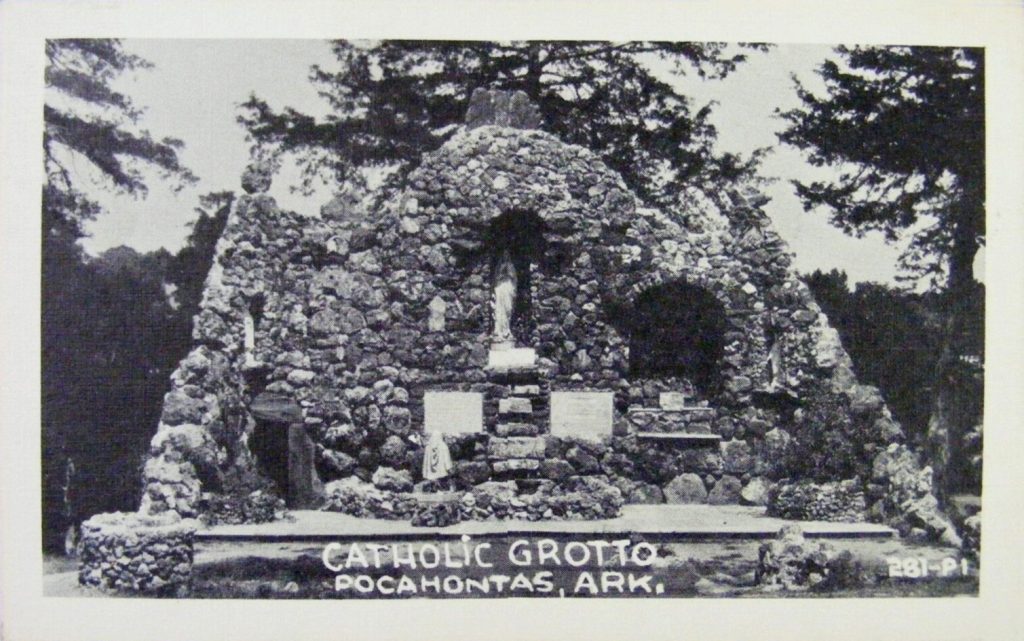
The Grotto at St. Paul’s Church in Pocahontas was built from September 1932 to September 1933 by the Pocahontas Knights of Columbus, on the spot where the original 1874 wooden church building had stood before being replaced in 1904, according to a 2018 article. It was built during the Great Depression, as an offering to Our Lady to relieve the economic suffering of the times.
The grotto was also built in memory of the priests of St. Paul’s, and particularly in memory of Msgr. Joseph Froitzheim (1875-1930). (He had died unexpectedly on the very day on which a surprise celebration for the 25th anniversary of his ordination had been planned, while hundreds of distraught parishioners knelt in supplication in and around his home.) The Arkansas Catholic had a lengthy article about his life and work, as well as the grotto, when it was dedicated in September 1933:
… Some time before his demise Father Froitzheim had made it known to the Very Rev. Father Haeringer and others that he desired at a later date to erect a suitable memorial to the former pastors of St. Paul’s, this to be on or near the site of the first church and to serve as a votive offering to the Blessed Virgin Mary, where his people could gather to supplicate Her to plead with Her Beloved Son to relieve the economic and financial distress then already in evidence. It was the suggestion of their new pastor that prompted the Knights of Columbus to sponsor this undertaking and after preliminary planning, ground was broken September 8, 1932.
The grotto is built along lines somewhat similar to the world famous grotto of Lourdes. The materials used are native stone and rocks, some moss covered while other sparkle with crystal brilliance and are so laid, one upon another, that no semblance of mortar joints are visible, giving the appearance of an almost natural formation. Water from the spring falls gracefully over the rocks and flows into a small lagoon that enters a large pool in the foreground; the pool is filled with varicolored water lillies and other marine plants. Flagstone walks leading to and surrounding the grotto add charm to the graceful symmetry of its lines and the artistic setting. The two memorial tablets, one to Father Froitzheim and the other to the former pastors of St. Paul’s are of native marble and are handsomely carved. Indentures in the rock work serve as receptacles for the statuary group; the central figures that of the Blessed Virgin Mary; Blessed Bernadette kneeling in the foreground.
On the feast of the Nativity of the Blessed Virgin Mary, September 8, 1933, the completed grotto was the scene of a field Mass and singularly when the evidence of relief from the depression was outstanding; this occasion also marked the first anniversary of the initial work on the grotto. The mass, of which the Very Rev. Father Haeringer was celebrant, was attended by almost the entire congregation and the Knights of Columbus in a body. Members of the Council served both as acolytes and as choir, the latter singing hymns appropriate to the occasion. The official dedication of the grotto will take place sometime in the near future.
Already a picturesque spot and attracting many visitors, the beauty of this memorial will be enhanced as the landscaping of the surroundings progresses and in time should be a veritable Mecca for visitors and tourists from far and near. Pocahontas Council is indebted to the officers of 1931-1932 and 1933, the several committees, in fact to each , individual member of the Knights of Columbus Council 2443 for their part in the planning and erection of this beautiful memorial grotto. Long live the Memory of dear Rt. Rev. Monsignor Joseph Froitzheim. R.I.P.—
Arkansas Catholic, September 30, 1933
Joe Schmidt (perhaps one of the KC) designed and helped build the grotto and his name is engraved on the shrine, according to a 2002 Arkansas Catholic article. The grotto had flowing water that collected in a pool at the bottom, according to the 1933 article.
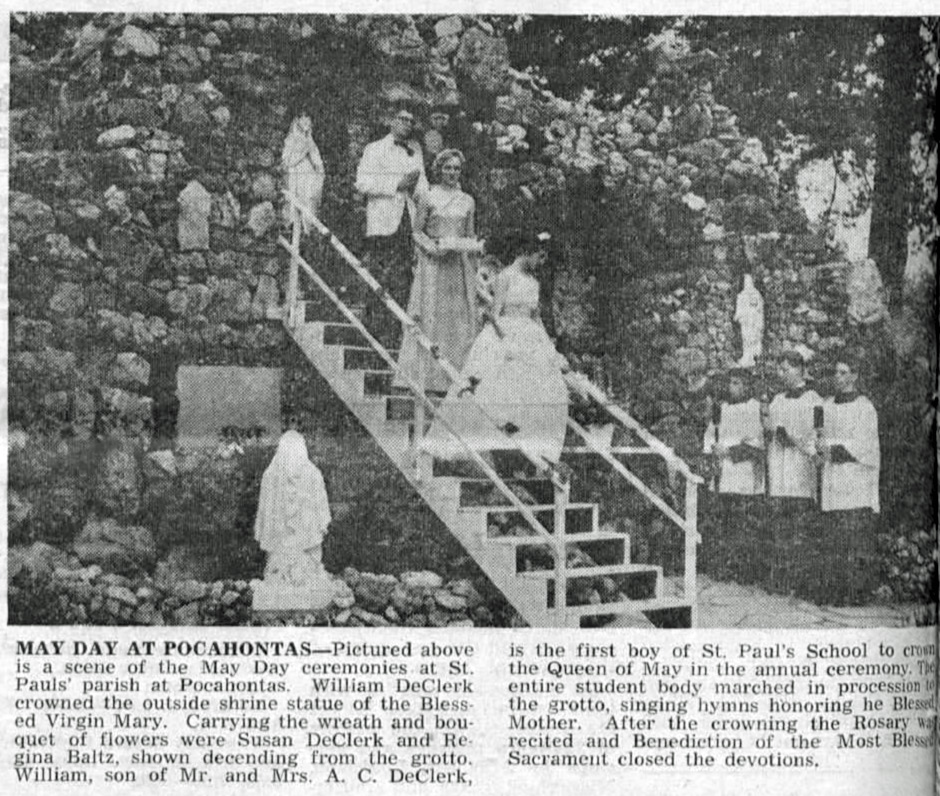
In 2018, St. Paul’s Parish celebrated its 150th anniversary, and the grotto
